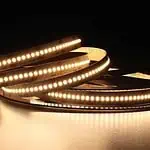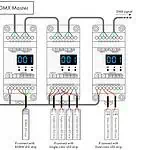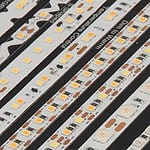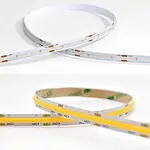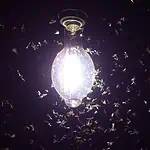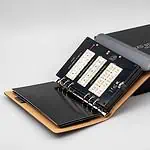LED strip lights are well known for their low-temperature operation. But they can also get hot and cause dangerous situations like fire breakouts!
Heat dispersion is the main cause of LED strip overheating. Extreme environmental conditions, high power supply, and low-quality LED chips can also make the strip hot. Again, if you use multiple LED strips to a single power source or overdrive the strips, it can get hot. However, you can solve this issue by correctly installing and maintaining LED strips following manufacturer recommendations.
Therefore, I will describe here about LED strips overheating, the reason behind it, their drawbacks, and how to prevent this situation. So, let’s dive in and find your answer from this deep analysis–
What Do You Mean By LED Strip Overheating?
The operating temperature of the LED strip is 122 to 140 degrees Fahrenheit or 50-60 degrees. Usually, it doesn’t exceed 75 degrees Celsius. But if it does, the LED strip gets hot, which is termed as overheating. This may be due to several reasons, for instance- prolonged usage, poor ventilation, or overloading the strip with high power. This can directly impact the performance, lifespan, and safety of the LED strips. So, to fix this issue, you should use proper ventilation and use heat sinks or cooling fans if necessary.
Reason For Overheating: Why Do LED Strips Get Hot?
LED strip lights can get hot for multiple reasons. Let’s see some of the most common causes of strip overheating–
Insufficient Heat Dissipation
When electricity passes the LEDs, it converts the electrical power into heat and light energy. The best part of LED strips is that they convert 80%-90% of energy to light and the rest to heat, which is highly efficient. But if your installation or light quality is not up to mark and lacks ventilation, LED strips may get hotter. So, proper heat dispersion is a crucial factor to consider. For this, you must keep the ventilation in mind and purchase strips with a heat sink. For details, read- LED Heat Sink: What Is It and Why It’s Important?
Overdriving The LED Strip Lights
LED strip lights usually run under low voltage, 12V or 24V. And if you provide a high-voltage power supply to these fixtures, they will get overheated, which can cause permanent damage. So, always remember that a 12V LED strip will need a 12V power supply/driver, and a 24V strip requires a 24V power supply or driver. By keeping the power supply in check, you can avoid LED overdrive and overheating situations. To learn about the voltage rating of LED strips, check this- LED Strip Light Internal Schematic and Voltage Information.
Connecting Multiple LED Strips In A Single Power Source
When you connect too many LED strips to a single power source, it overloads the LEDs, and they get hot. That is why it is essential to check the capacity of the power source or driver before connecting multiple strips to it. It is better to keep the load 20% less than the driver’s capacity. For instance, if the driver is 100 watts, the load you put on it should not exceed 80%. This will ensure optimal performance without causing overheating issues. However, if you are joining multiple LED strips to extend the length, be careful of voltage drop.
Spikes In Voltage And Current
A sudden increase or spike in voltage and current of LED strips can overheat the LED strips. This can occur due to several reasons like- power surges, lightning strikes, or problems with the power supply. Besides, a sudden increase in supply current or a malfunction in the circuit can also result in LED strip overheating. Again, if your light fixture faces flickering issues, it can also make the strip hot. To avoid such a situation, always regulate the voltage and current supply to ensure smooth light output.
Using Low-Quality LED Strips
The quality of LED chips matters when it comes to overheating issues. But the problem is that you may go for a low-quality LED strip just to save some money. These LED strips may not be binned properly and have greater chances of malfunctioning. Eventually, they lead to overheating, which shortens the lifespan of the LED and finally damages the fixture. So, you must purchase good quality LED strips that are well binned. If you don’t know what LED binning is, check this- What Is LED Binning?
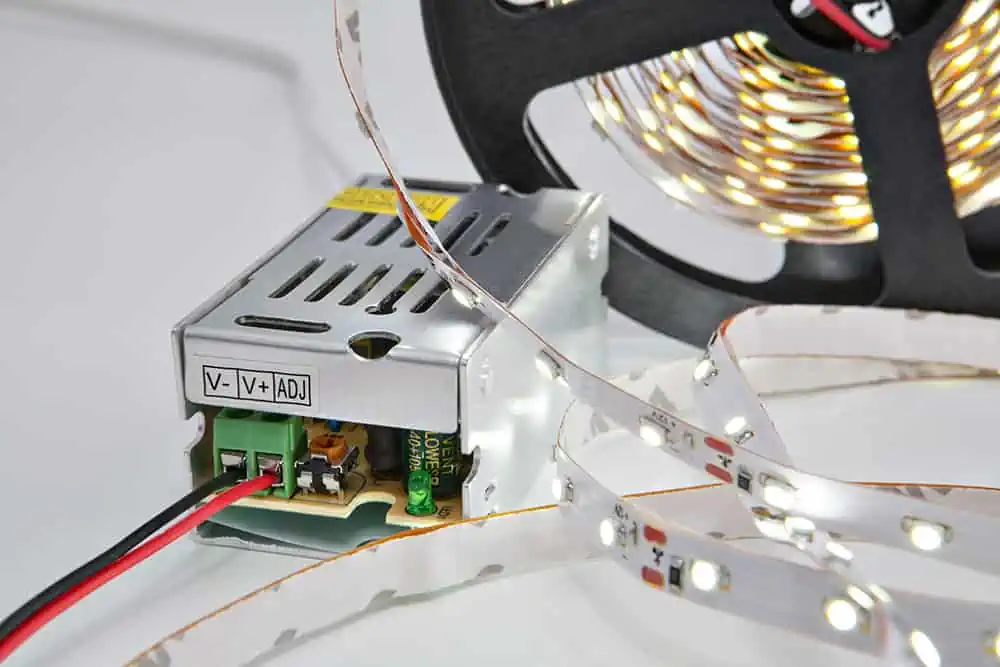
Adverse Effect Of LED Strip Overheating: Disadvantages
- Reduced Lifespan: The main drawback of LED strip overheating is the reduced lifespan. Excessive heat can damage the internal components of strips, and this leads to premature failure. It means you will have to replace them frequently or even need to purchase a new one, which is costly and inconvenient.
- Brightness loss: Overheating of the LED strip lights affects their performance. Because of the high heat, strips lose their brightness level over time. Ultimately, this makes the strips dimmer and less efficient.
- Color Shift: Color shifting is another disadvantage of LED strip overheating. In this situation, the colors can no longer appear vibrant or accurate. And you will find the strips in mismatch with your desired lighting scheme.
- Flickering Issues: This problem is inconsistent, making the environment less comfortable and annoying. Also, flickering issues are visually distracting and make everyone’s eye strain.
- Safety Hazards: Overheating LED strips can produce a significant safety risk. The too-hot LEDs can ignite nearby flammable materials. As a result, they can start fires, specifically when installed close to wooden surfaces, curtains, or confined places. Besides, the heat generated can damage the strip lights itself, causing further fire hazards. Therefore, it’s necessary to have proper heat management and follow installation guidelines to prevent such incidents in the future.
- Reduced Energy Efficiency/Consuming More Energy: When LED strips run with excessive heat, they become less efficient at converting electricity into lights. And this leads to increased energy consumption, which will raise electricity bills. Also, it negatively affects environmental consequences. So, to maintain energy efficiency, monitor the temperature and use proper cooling methods if necessary.
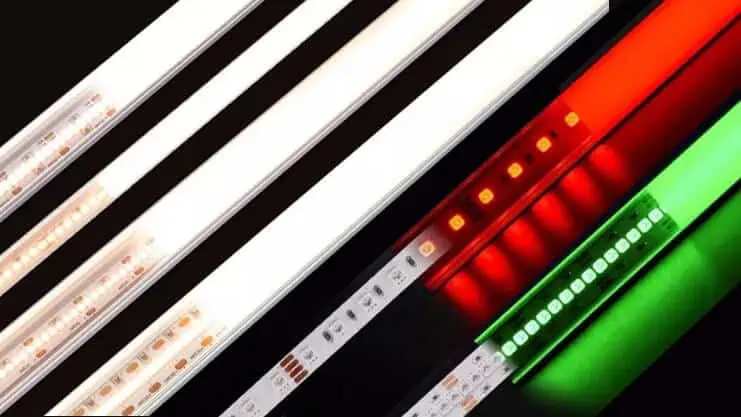
How To Prevent LED Strips From Getting Hot?
Do you experience LED strips overheating? Don’t avoid this; often, this issue can cause life threats as it can burn the circuit or create fire. So, why not take a few safety concerns ahead? In the section below, I have included tips to save your LED strips from getting hot.
Avoid Power Surges In Your Circuit
Do you stay in places where lightning often strikes? If you don’t use surge protectors, your electronic gadgets may get damaged. Surge protectors can keep your fixture safe from power surges by diverting excess voltage away from your connected LED strip. So, using them will reduce the chances of your LED strip lights getting too hot or permanently damaged because of sudden power changes.
Purchase High-Quality LED Strips
LED strips are known for less heat production. Besides, they are highly energy efficient, consuming 80% less energy than transitional light fixtures. But this can turn over if you use a low-quality fixture. It will not provide the expected lighting quality, will get overheated, and won’t last long. Besides, they may burn out due to overheating during the soldering of your strip lights. Therefore, always go for better brands. Check this article to list out the best LED strip suppliers- Top 10 LED Strip Light Manufacturers And Suppliers in WORLD.
Consider LED Brightness At First Sight
Typically, the more brightness of the LED lights, the more energy they need. And this is related to how they produce heat. If you purchase a high power strip to improve the room’s brightness, you can see their excessive heat production. As a result, the strip will get hot, even damaged. In addition, people love to buy high-powered LED strips and enjoy their brightness. For this, you can choose LED aluminum profile sinks. They will help stop too much heat mechanism and ultimately prevent overheating. However, if your LED strips are not bright enough, read this guide- How To Make LED Strip Lights Brighter?
Prevent Overload On The Power Supply
Often, LED strip lights can get burned because of the excessive power load on the supply. More specifically, when your power supply is 100 watts, you need to connect strips of 20 watts. But if you try to connect more than four LED strips, each using 20 watts of power, it can break down the power supply. Also, the circuit can catch fire, and strip lights can get damaged permanently. So, to prevent this situation, you need to put 80% load on the power supply.
Consider Environmental Temperature And Ventilation
One of the biggest reasons for LED strip lights overheating is because of the high temperature of the environment. Different LED strips have varying temperature limits. When you stay in cold areas, the temperature will be no problem until it falls to zero degrees. In a warm environment, the high temperature causes overheats and burns the strips. For this, you need to buy an LED strip to determine the functioning temperature range.
Use The Right Voltage
LED strip lights are available in different voltage ratings. The low voltage strips usually come in 12V and 24V, and the higher ones can be 110V or 240V. Whatever the voltage of the LED strip is, make sure it matches the voltage of the power supply. If you input a 24V power supply to a 12V LED strip, it will overpower it and can overheat and greatly damage the internal components. So, always make sure you are providing the correct voltage supply to the LED strips.
Consider Using A Heat Sink
The heat sink is significant when you use LED strip lights that require more than 350 mA. A 30 mm heat sink is necessary for an 8 to 10 mm wide strip. However, it’s always best to select between copper or aluminum only. Aluminum and copper channels are excellent heat absorbers for strip lights. Also, they can protect the lights from water and dirt. Often, these heat sinks can reduce the temperature to 5 degrees.
FAQs
One of the common reasons for LED strip overheating is poor LED thermal management. The electricity supplied to the LED strip is converted into light and heat. And it is important to ensure this produce is dispersed away from the fixture. When the LED strips fail to do so, it gets overheated. Other reasons for LED strip overheating are overloading the strips, wrong voltage supply, spike current and voltage, etc.
LED strip lights are much cooler compared to other kinds of light fixtures. Although the chances of causing fire for overheating is low, some malfunction can lead to fire. This happens with poor-quality LED strip lights.
You can take so many steps to prevent LED strips from overheating. For this, proper ventilation is most necessary and avoids overloading the circuit. Also, you must use strips with built-in heat sinks and manage recommended power levels. The cooling solutions fans or heat sinks will dissipate heat.
The operating temperature of the LED strips may vary based on the design, type, and brand of the strip. However, they operate at 122 to 140 degrees Fahrenheit or 50-60 degrees. Yet they can withstand temperatures of 185°F (85°C) or more.
Usually, LED strips are cool for humans to touch. They operate at a relatively lower temperature than other types of bulbs. However, for overheating issues, LEDs can get hot due to poor ventilation or excessive power. So, you need to check regularly and sink heat for proper dissipation.
Yes, hot LEDs can damage circuit boards or components. Excessive heat can degrade solder joints, compromise the integrity of circuit board materials, and reduce the lifespan of electronic components. As a result, it leads to costly replacement and repair. So, it’s crucial to manage LED heat to maintain the reliability and longevity of the electronic system.
Yes, leaving LED strips on all day is generally safe, as they are energy-efficient and produce minimal heat. But, it’s essential to choose high-quality LED strips for this. Also, proper dissipation helps to prevent overheating or electrical issues in the future. However, consider turning them off periodically for longevity and energy savings.
Conclusion
If you notice your LED strips are getting hotter, first check the current and voltage supply is okay. Make sure you are not overdriving or overloading the LED strips. For this, always hire a professional electrical engineer to work on the wiring, especially for large installations. Another important factor to consider is the ventilation of your room and its temperature. If the LED strips can have a favorable environment for heat dispersion, they will get overheated.
Above all, the quality of the LED strips is a crucial consideration that can lead to overheating. So, always go for reputed and reliable LED strip lights that ensure proper quality. And for that, LEDYi is your ultimate choice! We supply our LED strips to 30+ countries. All our products are well-binned and lab-tested. No worries about overheating issues with our LED strips if you have installed them well. Therefore, without any further delay, place your order ASAP!
